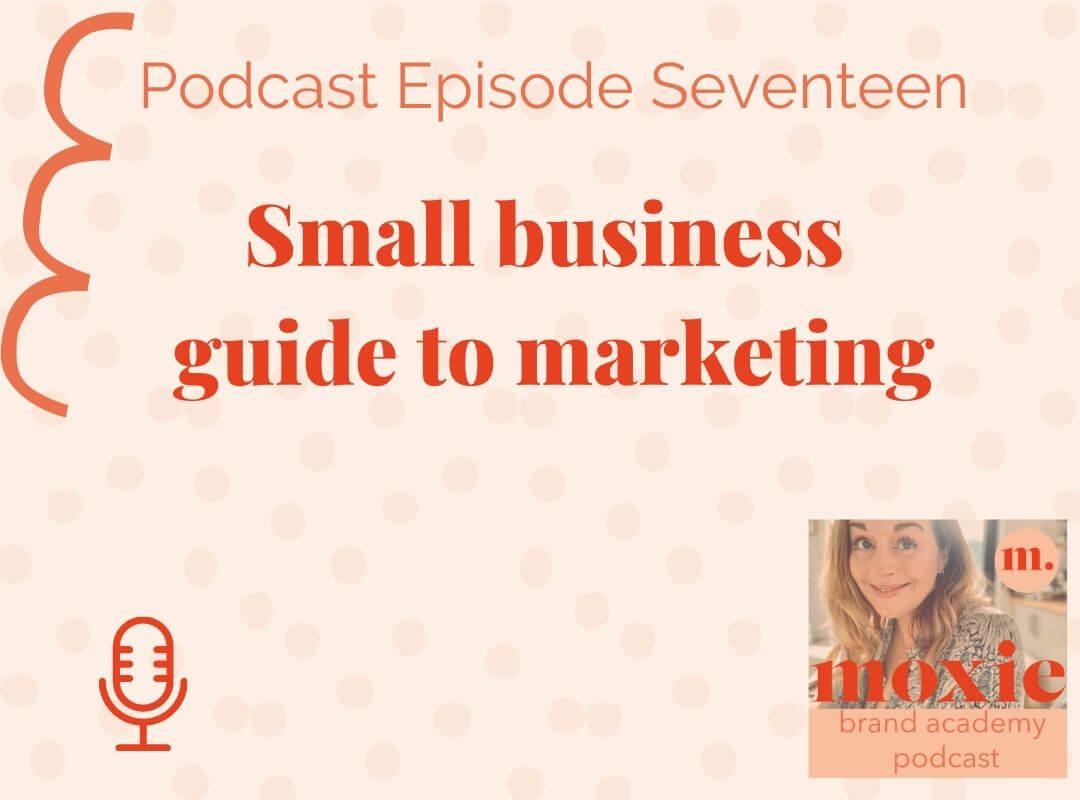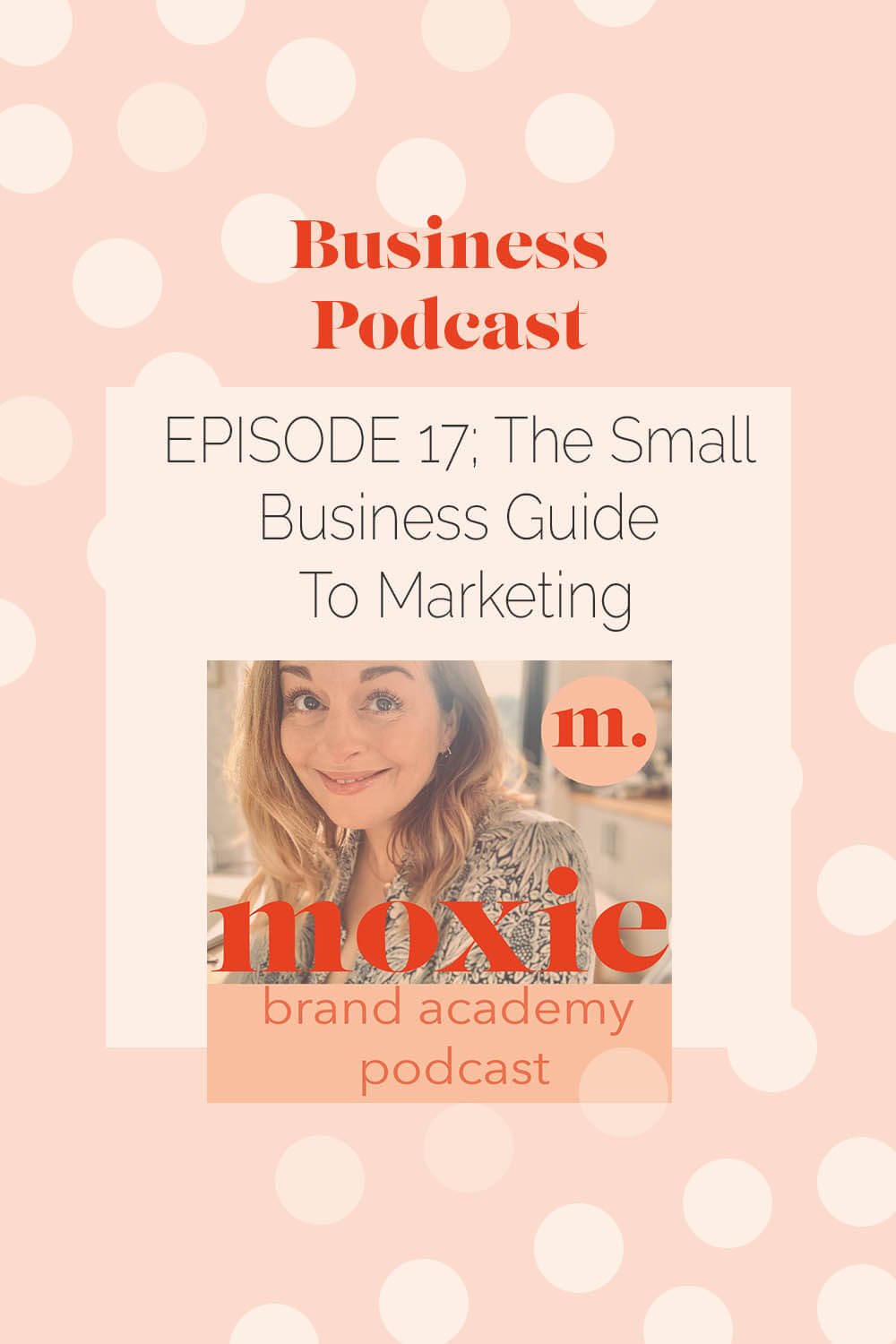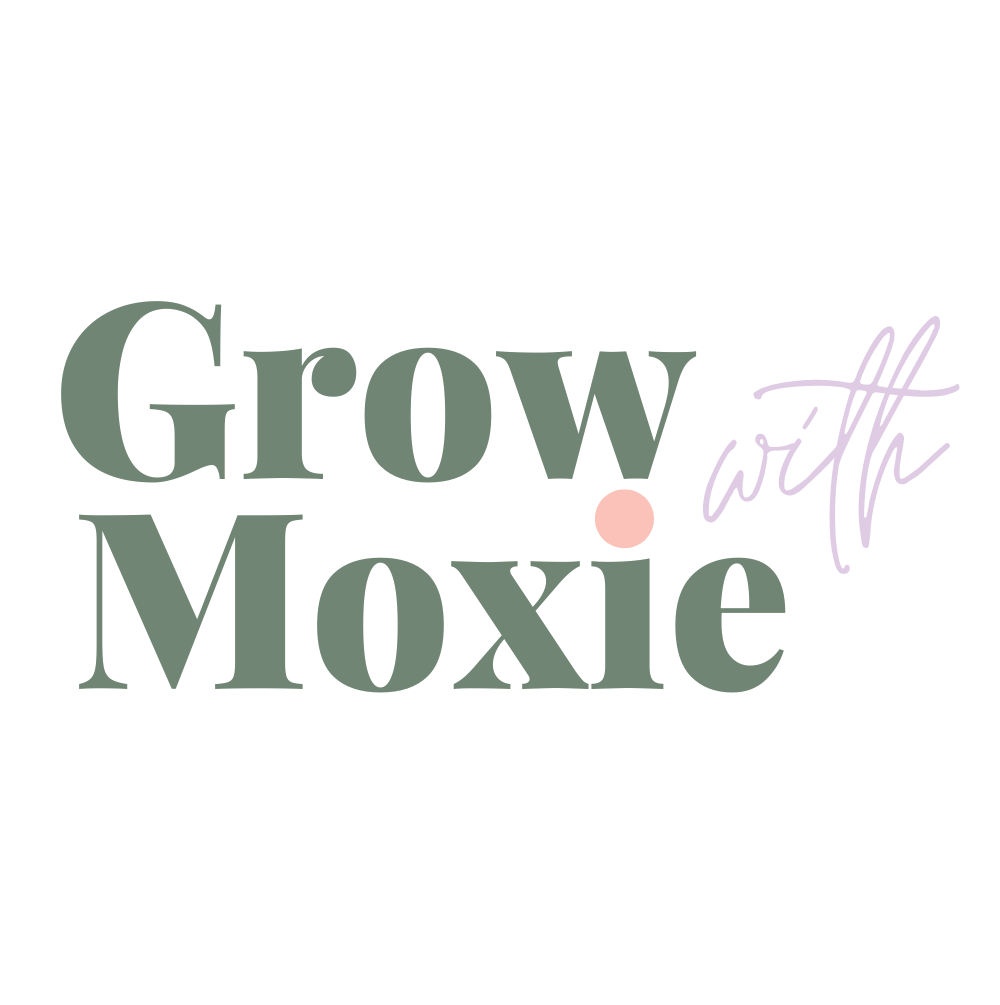Small business guide to marketing

The Small Business Guide to Marketing
This week I’m going to go down into the traditional areas of marketing and some of the more contemporary ones as well and break them down for you so you can decide which ones might be right for your business. As always, I never tell people what they should be doing. I think there’s great merit in taking advice or listening to what others have to say, and then thinking about what really is going to work for you. There’s no point doing everything if you haven’t got the time. There’s no point doing everything anyway, in my opinion, because you will spread yourself too thin, regardless of the time you have. It so much better to concentrate on a few things at work really well for you and just forget the rest. I’m going to get straight into it.
I’m going to start with content marketing because this tends to be a biggie because of SEO. If you listened to last week’s episode, where I talked about websites and SEO, you’ll have seen that that was one of the major things to do with on-site SEO. Content marketing breaks down to blogs, ebooks, webinars, things that are content that you can use to market. It’s really good for SEO growth as I’ve just said it increases your website traffic and your visibility. It’s a great thing because you can use it to share on other platforms to get people to come to your website so you can use it to create free value, giving advice or answering questions or providing something for people that they can take as a tip or a way to improve something about their life or business. These are all really good ways to get people to your websites.
My advice on this area would be to make sure that you have a good content creation system in place just because you need to have a streamlined approach to this. It could take you a lot of time if you are going to be producing lots different blogs or eBooks, webinars, even things like podcasts can be could be classed as content marketing because you use the transcription [like this one!] on your website. I would recommend making sure you had content pillars so you’re really clear about what you’re going to write about or talk about, and then you can then use these to brainstorm 12 topics for the quarter, if you can do one week and to make sure that you’re not kind of talking about the same thing all the time. I would recommend doing things in bulk, so recording in bulk, writing things in bulk and then editing individually, and I would recommend scheduling because it will just save you so much time rather than having to remember to do everything on an individual basis.
The next type of marketing is email marketing, which is where you thinking about lead magnets. To get people to join your list, you need to think about are you doing welcome emails and if so, are they good? How do you do your sales emails without inside too ‘salesy’ and your monthly mailouts: what are they about? You might do them weekly; you might do the monthly; you might do the biweekly, like I do. What do they mean to the person who’s reading them? What’s the purpose of them? It’s a really good way to nurture your customer base and keep them informed of what’s going on in the business. I would recommend that you design a strategy to attract your subscribers. Think about what are you going to do to get them to give your email address, because nobody likes to do that easily. How are you going to then nurture them when they’re there? What are you going to do for them, and how are you going to give them a service that is valuable, beca
We don’t read emails unless they’re actually going to be of any use to us. And ensure that you have a ‘tone of voice’ or ‘house voice’ that always feels like it’s the same. It should always feel like it’s coming from the same person and that you are almost having a conversation with that person, because you’re wanting to build a relationship. And it isn’t always just about sales. Sometimes it’s just about building relationships, and I think that’s a really good way to look at email marketing. Yes, you would probably want to encourage sales from those people, but actually the relationships are the things that are the most important.
On to social media marketing. This includes things like Facebook marketing, Twitter, Instagram. TikTok even. This is really good for businesses that have customers and potential customers on these platforms. You have probably heard about the wealth of people doing really well on TikTok because they have tapped into a market that is there. It’s new, it’s fresh, and it’s interesting.
It’s really important to design a strategy that works for that particular audience. I think that having one strategy that fits across all of those platforms is probably a bit of a mistake unless you’ve got the same customer platform. Most platforms have a different type of person on there, so the person on Twitter is probably going to be on Instagram, but they might not follow the same people on those two platforms. So you probably want to think about those things and just be careful about how ‘salesy’ it is. We are businesses, and we want to advertise, we want to get sales. There’s no shame in that whatsoever, but just be careful about how you create your strategy. Make sure that you break up your selling or your sales stuff with helpful or interesting or emotional advice, or tips, guidance or posts.
Influencer marketing is pretty good for a product-based business. It has to be right for your business and sometimes you will pay that particular influencer or you will give free product, depending on the contracts that you establish. What this does is it gives access to an engaged audience to a smaller brand. It means that you can tap into that committed, engaged audience for that particular influencer, and as long as the brand fits with their kind of audience and their style and their brand, then it can be really beneficial. I will say that you are really only borrowing that audience for a small amount of time. Some will pull over and become your audience too, but don’t expect there to be a huge lasting audience that comes from that affiliation. You probably looking more to drive sales in that affiliation, I would say, but it will work differently depending on the brand.
Then you’ve got traditional marketing, which includes things like leaflets, catalogues, TV ads, radio ads, cold emailing etc. Print marketing can actually really useful for some businesses, those that participate in events, fairs or mail outs might find that that print marketing really works for them. On the whole, traditional marketing is used by bigger businesses like Domino’s etc because they have the budget and they can use it to repeatedly market in various different ways, like text messaging, leaflets, Instagram, Facebook ads and TV ads and radio ads. They use it as a suite of marketing as opposed to as one-offs.
Pinterest marketing: Pinterest being a search engine means people are looking for solutions and products really. Pinning your products and optimising your account is a great way to get lots of eyes on your brand and refer lots of traffic. If you listened to last week’s episode, again, you will know that getting traffic to your website is one of the key reasons you end up in search returns; 42% of the reason you get in a search return is because of the amount of traffic you get to your site. So, Pinterest is really good for that. II can’t recommend it highly enough. In next week’s episode I’m actually going to talk about how it’s helped my business and go into the details, so you might want to tune in to that.
PPC or ‘pay per click’ click advertising obviously falls into some of those other categories, so you might do a bit of PPC advertising with social media marketing for instance, or content marketing. But it is its own category. If you listened to last week’s episode we talked about Google ads, Facebook ads and Pinterest ads. This kind of advertising and marketing is really great for companies that want to grow fast and have a budget for it. There are lots of agencies out there that will help you with this and get you the kind of results that you would hope for, but you can also have a go about this yourself. I talked about this a little bit in last week’s episode, so if you’re interested in that kind of marketing then you might want to go have a listen – I talked about real fundamentals and some resources you could choose if you want to do it for yourself.
As I always say, you just need to do what’s right for you and your business. There is no one size fits all when it comes to marketing, all brands and business owners are unique so it’s super important that you consider if that particular route is right for you. It might be that one of the means I said is for a different kind of business is completely right for your brand. Just because I’ve said it’s not does not mean you shouldn’t be doing it.
The takeaway this week is that there are many different types of marketing that you can use to grow your business. Some will be more effective than others, but you need to kind of look up which ones you think you could benefit and look at the brands that you’re running, the business you’re running and see which ones really fit. If you’re a small independent brand, you probably want to nurture your audience, so having an email list that you send nice emails to on a regular basis is actually a really great part of strategy, as is creating blogs because you can connect with the audience in different ways in that way. You might want to do videos etc, so have a really good think about what suits your audience and your brand and come up with a strategy that fits that. I would say pick two to three channels to start with. Don’t try and do a bit of everything, because I don’t think that will work as well for you as really concentrating on two to three. I hope you found that useful, if you want to chat some more my details are in the show notes. I am here to help.
Listen to the podcast episode here
Pin this for later

